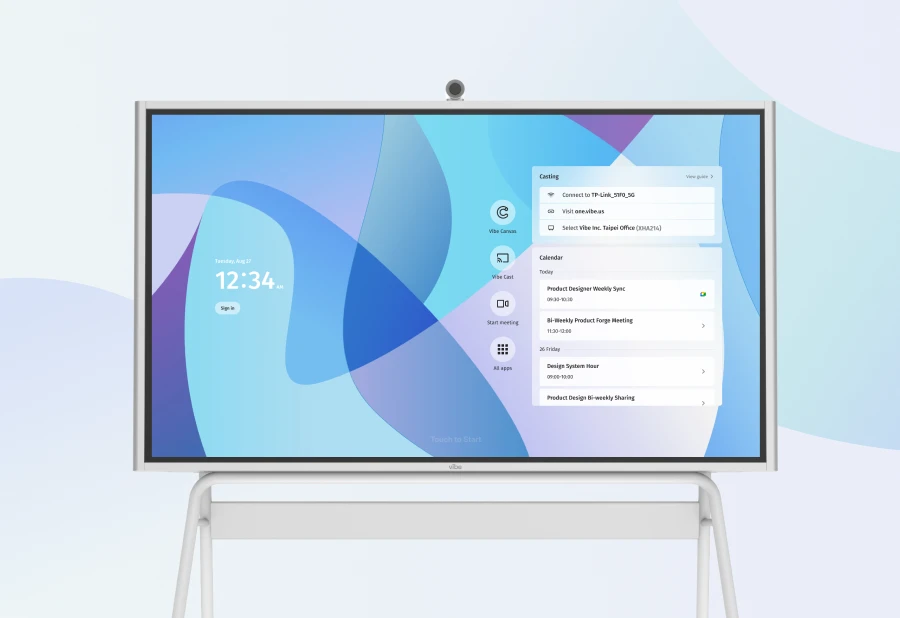Picture this: after hours upon hours of prepping; you’re ready to present your pitch to investors. You’ve reviewed your slide deck, prepped your team, and considered possible questions from your audience. But when it comes time to give your presentation, something isn’t quite right. You’re only a few minutes in, and you see investors looking down at their phones. It’s not just one or two distracted audience members. Nearly everyone seems, well, bored and uninterested.
Sounds like a real letdown, doesn’t it? There are so many things vying for our attention these days. It’s easy to lose your audience’s engagement.
The good news? Interactive presentations work. There are formulas for increasing engagement and the effectiveness of your pitch. In this article, you’ll find tips on how to structure your pitch, do’s and don’ts for engagement, and tools to help you keep everyone’s attention.
How to structure an interactive presentation
First things first, consider the way you communicate information. Pitches can contain the same content but vary greatly in their effectiveness. So, before we get into format, let’s start with some easy questions you can use to review your pitch:
-
Who is my audience? What do they want to know?
-
How big is your audience?
-
How familiar or unfamiliar are my audience members with my topic?
-
What questions may my audience have?
-
Does my topic relate to my audience members at least on some level?
-
Have I left room for audience participation in my presentation, or is it more of a monologue?
Use your answers to these questions to help tailor your format as we discuss below:
Your audience’s background
Ideally, you have a general idea of who will make up your audience, their interests, and potential challenges to your pitch. If you don’t know much about your audience, it’s time to research. Get to know them: their organization, roles, and career history. Make sure you understand if they’ve invested in products or services similar to your own. If you’re attending a large pitch event, connect with the event team to get a better feel of who is typically invited.
Your audience’s size
If you’re pitching to a relatively small audience, you can hyper-personalize your content to this group. If your audience is larger, look for opportunities to layer in bits of personalization into the pitch. Regardless of size, your pitch cannot be something that you can present to any audience. It should feel customized to who you’re talking to on pitch day.
Related: Lead Meetings with Confidence Using the Ultimate Conference Room Checklist
Your audience’s familiarity
How well does your audience know your industry, potential customers, and product or services? If they’re relatively familiar, you can give a brief overview and move onto a customer story to get them committed to your pitch.
If they aren’t familiar with your product or services, give your best elevator pitch. Use clear, precise language. Forget the buzzwords. Your audience should be able to walk away from your elevator pitch understanding what you do, who you do it for, and why you do it.
If the audience has not heard of your product or service before, you will need to educate them in the quickest way possible. You’ll do that without taking all the time you need to get the other messages across.
Know what your audience wants to hear
You might be surprised by this suggestion. Getting your audience’s attention isn’t about telling them fake or exaggerated information. Instead, you can share with them what they want to know by considering the questions they may have.
Generally speaking, you can expect investors to ask about:
-
Your first customers and customer base
-
Other investments in your company
-
Advertising, public relations, and marketing
-
Partners
-
Your team
-
Sales
-
Product and/or service-related milestones
-
Feedback you’ve received and adjustments you’ve made based on it
-
Competitors
-
Customer Lifetime Value
-
Intellectual property
Of course, there are a number of other questions your audience may have. Use the ones listed above to spark inspiration for your preparation. You don’t have to include answers to every single question in your pitch. However, you should be prepared to answer them (after all, it’s an interactive presentation, right?) and include insights around what you’re selling, who you’re selling it to, your success so far, and future plans.
How your offering relates to your audience
Maybe your offering relates directly to your audience. If so, awesome. But in most cases, you might have to do a bit of finessing to make things stick.
How to make it happen? Start by opening your pitch with a real customer story. Paint your customer as the hero. This story should include:
-
How your customer found your offering
-
Their pain points
-
Their considerations or needs before buying
-
How your offering solved their pain points
Remember to make sure it’s a true story. It doesn’t hurt to be extra descriptive, but your story should be rooted in truth. That way, you can tell it with ease, and your audience will be drawn into the narrative.
 A woman writes down ideas while brainstorming ways to design an interactive presentation.
A woman writes down ideas while brainstorming ways to design an interactive presentation.Ways to make the presentation interactive
You’ve got to give your audience a reason to get engaged! We’ll touch on tools and resources to help you drive engagement below. But first, there are some things you can do to connect with your audience that require no subscription fees, WiFi, or downloads.
Try asking a question
This suggestion might seem obvious, but we’re adding a twist to it. Try asking a question whose answer will demonstrate commonality amongst your audience. You could also ask one that directly links your audience to your offering in some way.
Poll the audience
This technique is similar to asking a question but helps to reiterate whatever message you are making. You can also use it to gauge your audience’s interest level. That way, you can redirect or move the conversation in another direction if needed.
Make it personal
Your investors want to know about your offering and customers, but they also want to know about you. Who are you as a leader? What makes you different, credible, and successful? If you can share stories about yourself early on in the pitch, you’ll help to encourage empathy and establish a greater connection with your audience.
Pause (it’s that simple)
There are two main benefits to pausing. First, it’s a way to give the audience (and yourself!) time to stop and think. We all have a million things on our minds. A brief pause gives us a chance to get back on track.
Pausing also gives your audience the opportunity to contribute and ask questions. If you’re talking non-stop, your audience won’t have space to contribute outside of an interruption. It’s easy to get carried away and want to run through your pitch as quickly as possible. To avoid this mistake, build a couple of pauses into your interactive presentation. Include them as you practice. That way, you’ll build in natural breaks for discussion.
An additional suggestion: don’t over do it. It is possible to be overly interactive—the purpose is asking questions or using polls to keep your audience engaged. If you use these tricks too much, you’ll risk irritating your listeners and breaking up the flow of the pitch.
Can’t-miss apps for interactive pitches
Now that you know how to improve your pitch, let’s move on to some apps that can help you make it even better.
Add these tools to your arsenal:
-
Canva makes great design accessible to everyone. The graphic design platform makes it easy to create eye-catching flyers, social media content, and brochures. You can also use it to enhance your pitch deck; just start with their collection of templates!
-
Beautiful.ai’s presentation tool allows you to create customized, branded pitches with automated formatting. Its setup reduces the amount of time it will take you to create. So, you can spend more time enhancing your story and perfecting your interactive presentation.
-
Slide.Bean is an AI-powered presentation platform. Its presentation software tests thousands of configurations in seconds to help you find the ideal format for your deck. You can even work with their consultants to get expert advice.
-
Vibe’s interactive whiteboard brings a new level of interactivity to pitch decks. No more click-through slide after slide. You can sketch, conceptualize, and collaborate right on the canvas. The multiple functions and real-time collaboration abilities make in-person and hybrid presentations more immersive.
Related: Connect with Key Teams Using the Best Video Conferencing Hardware
How to handle presentation day
If you find yourself getting stuck during your pitch deck creation, go back to basics. Investors want to understand your offering, your financials, team, customers, and needs. Stick to this roadmap if you ever find yourself veering off course.
On pitch day, remember to take note of feedback from investors. With each pitch, you’re getting another opportunity to refine your deck and make it that much better.
Want to learn more about how to bring more life to every presentation, meeting, or brainstorming session? Explore our blog where we share practical tips, success stories, and detailed guides on how the Vibe Smart Whiteboard can make a big difference for your team.
Vibe offers a collaborative solution combining an interactive digital whiteboard and innovative smart software. Increase engagement and efficiency at your brainstorming sessions, virtual training, and classroom sessions by integrating your favorite applications with video conferencing and an infinite, mess-free writing canvas. Collaborate today with Vibe.
Looking for the latest in interactive whiteboard technology? Check out Vibe today!








-1sbltxxq4FYxHrXrwJVLsCDNsXpqNa.webp)
-5Zp0pmSytvcuYDVs1LvuwplKuRneK0.webp)
